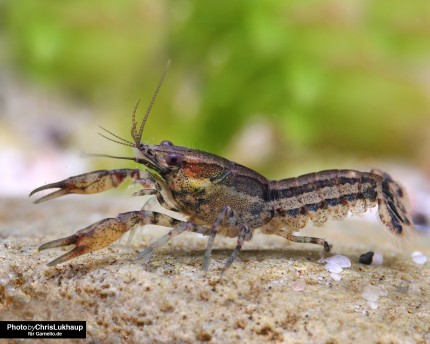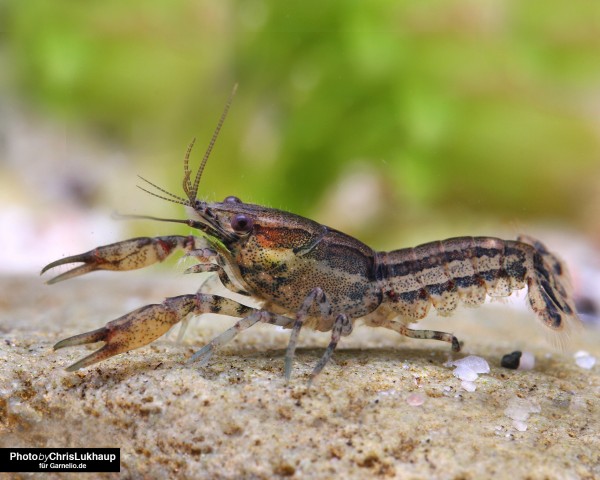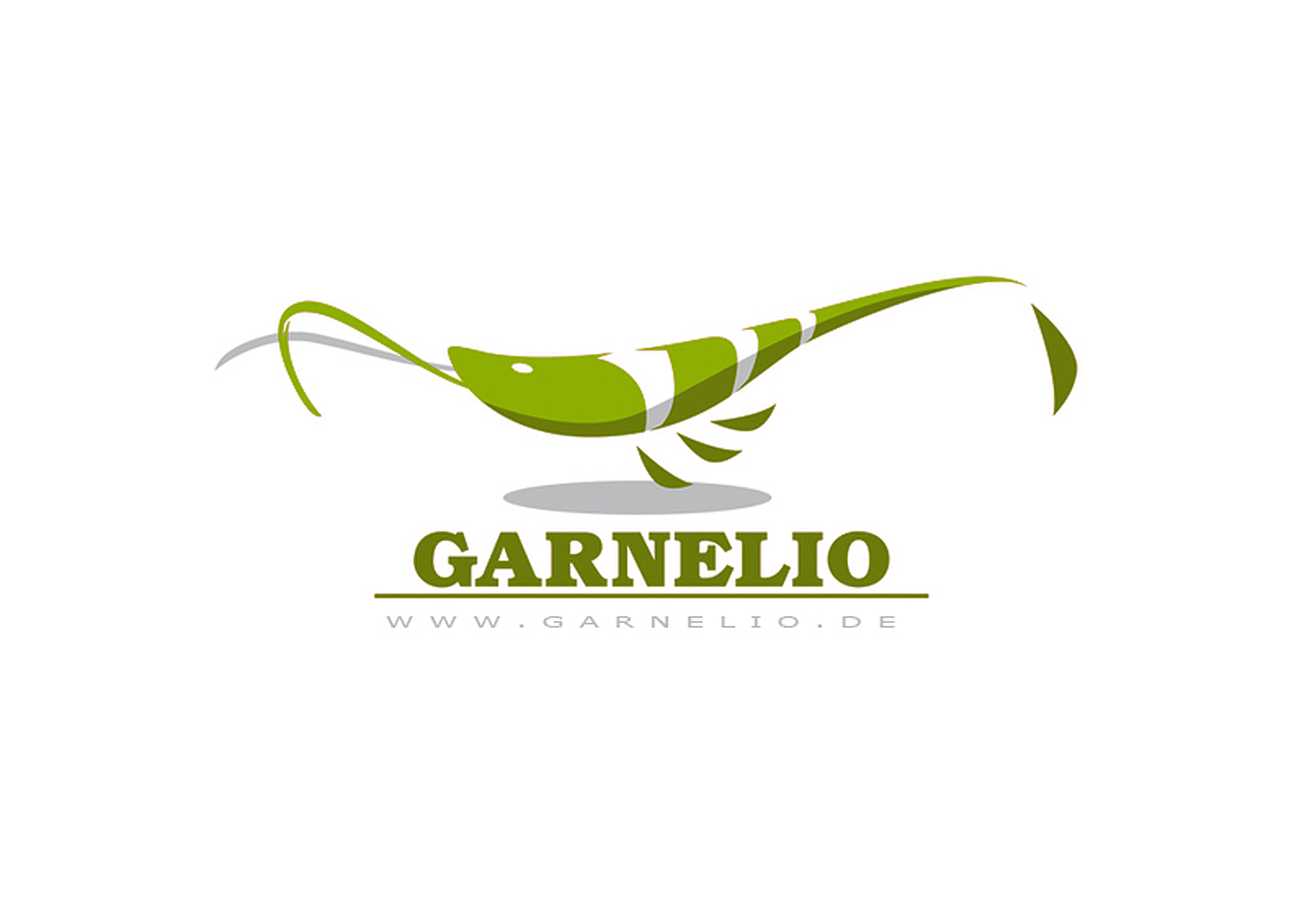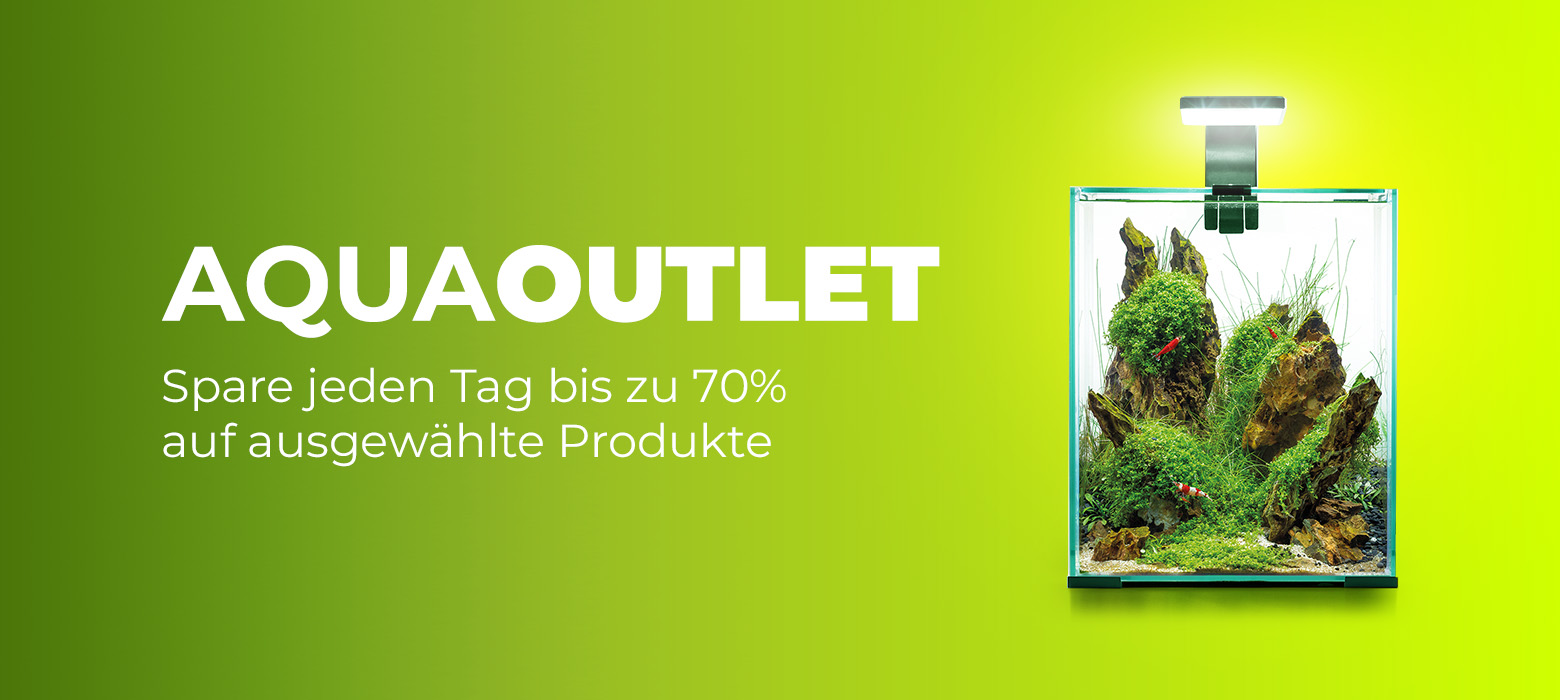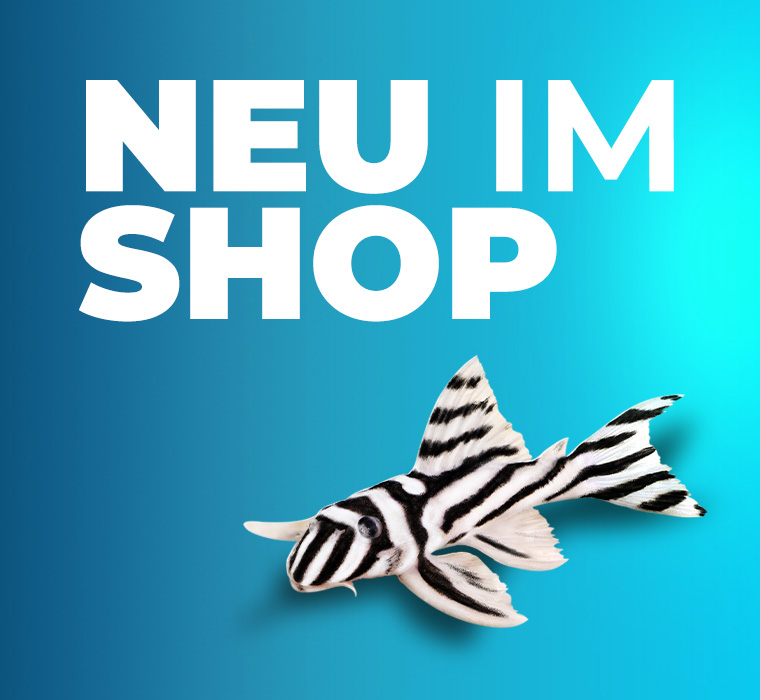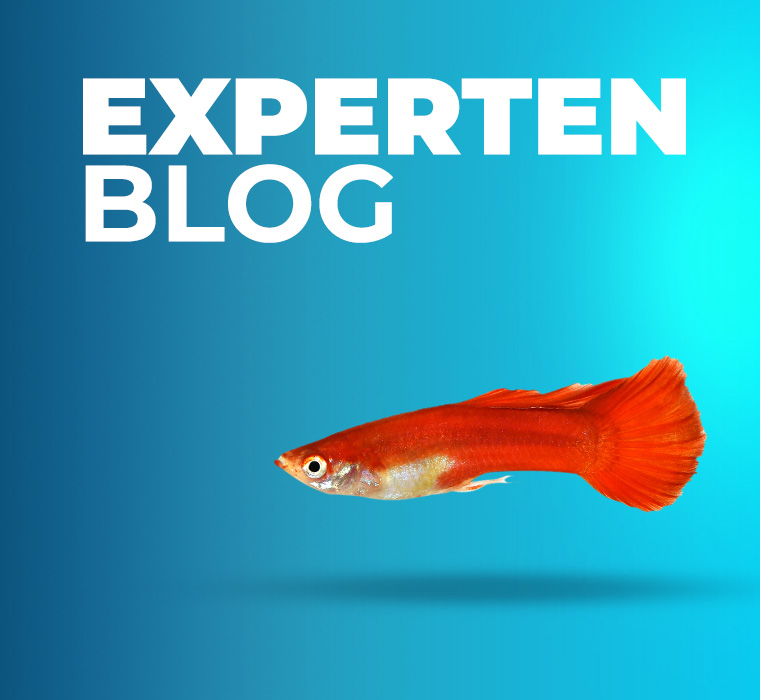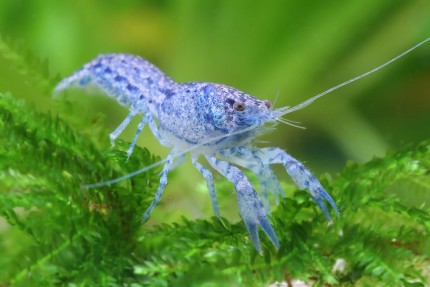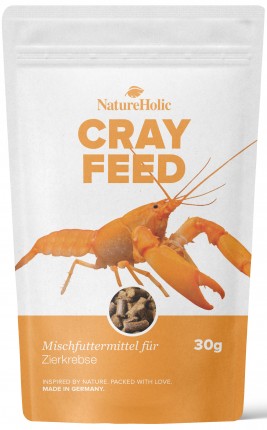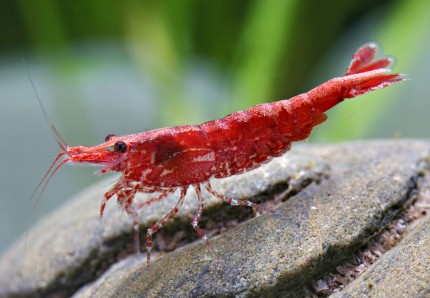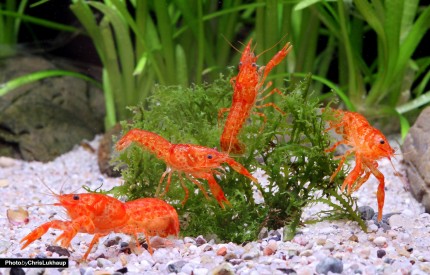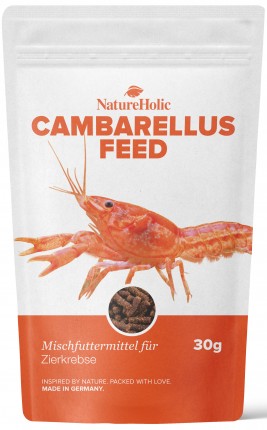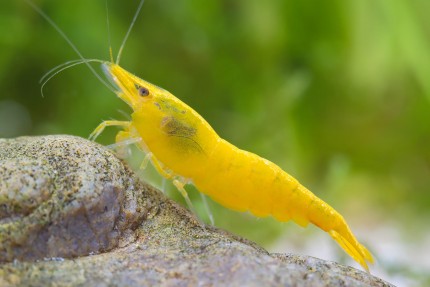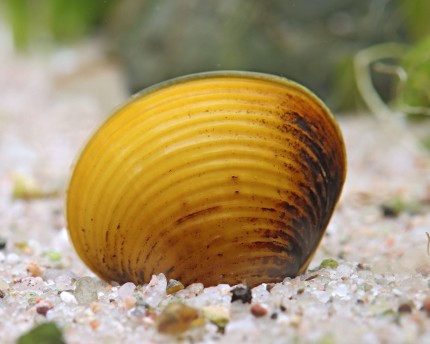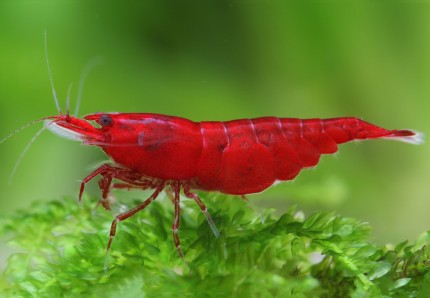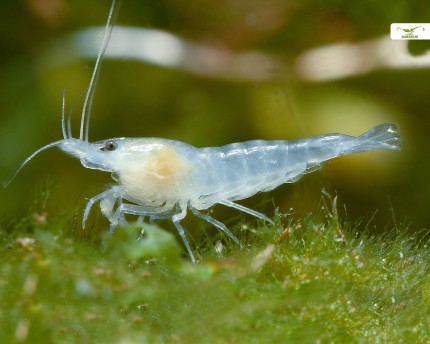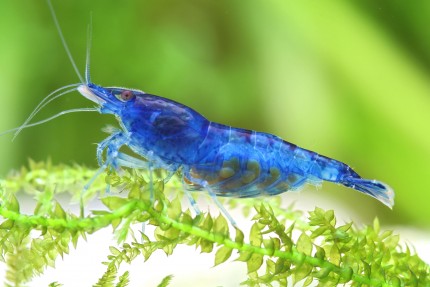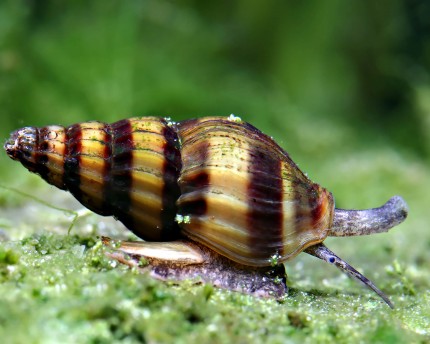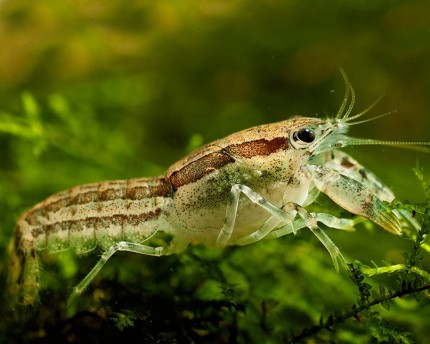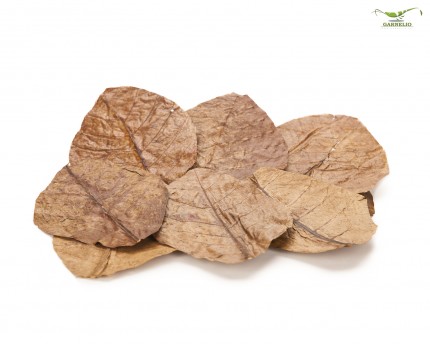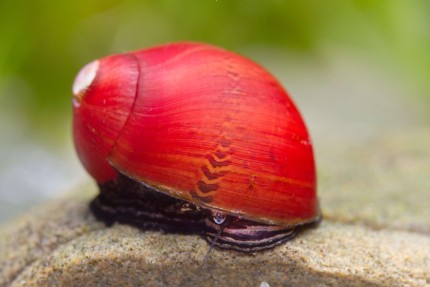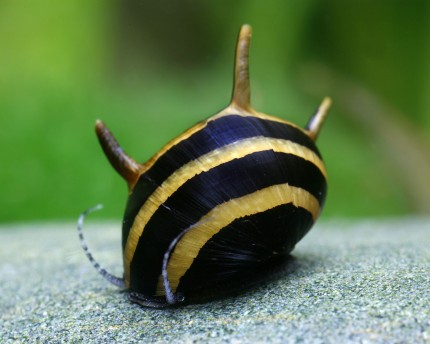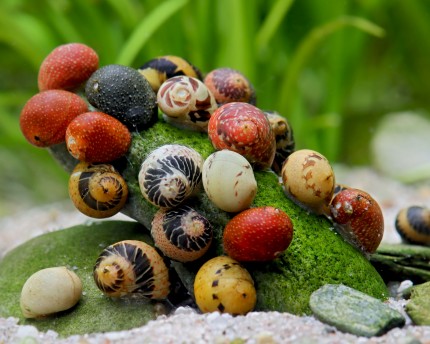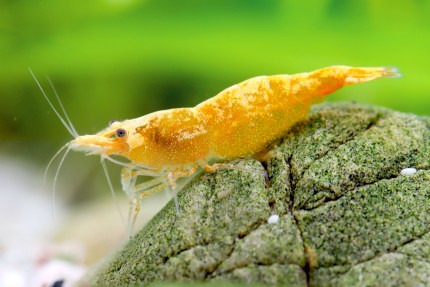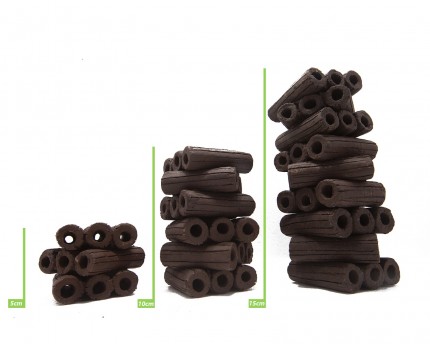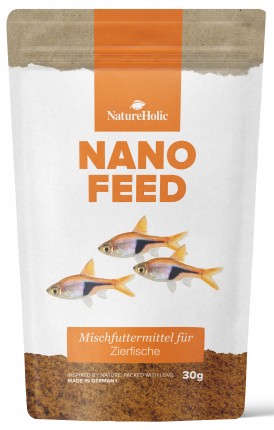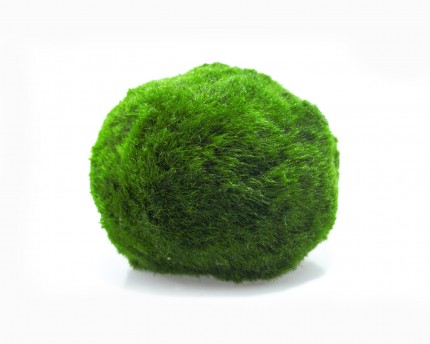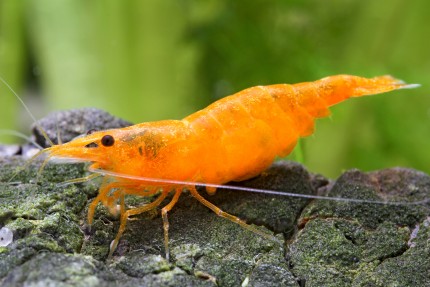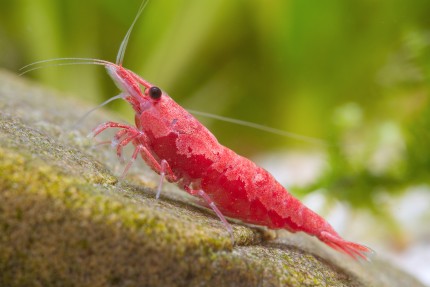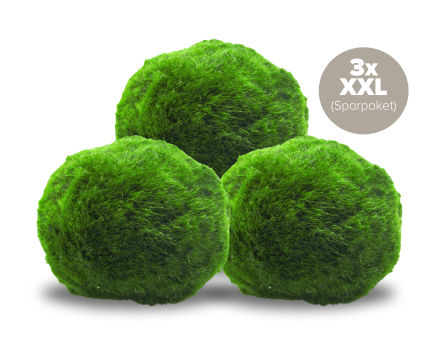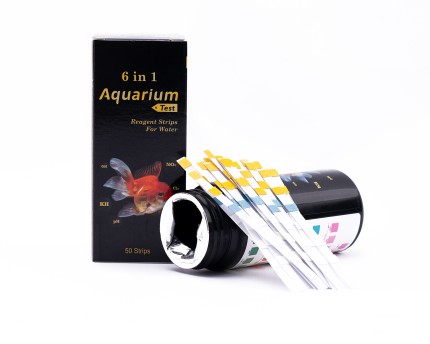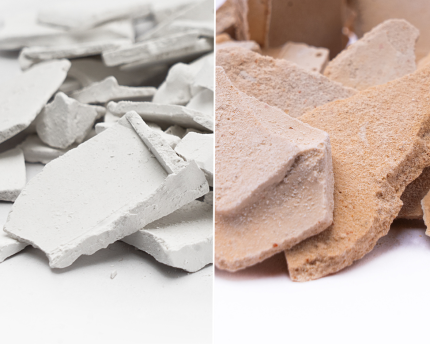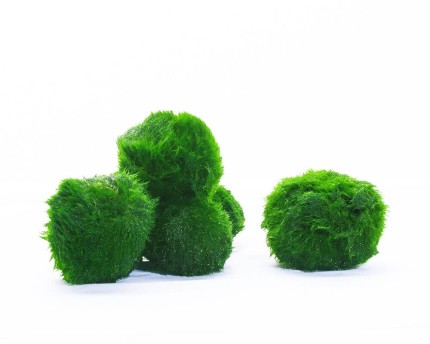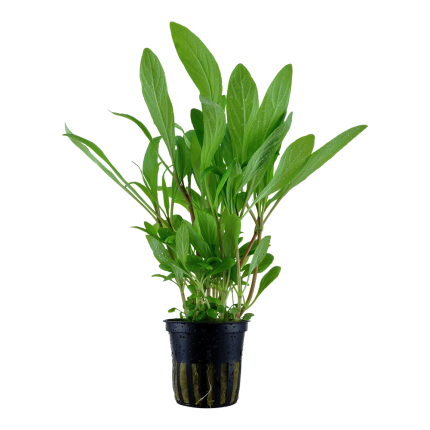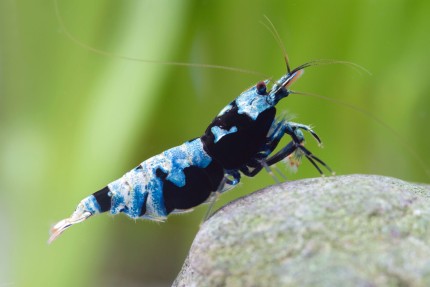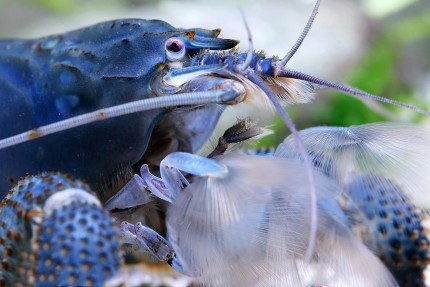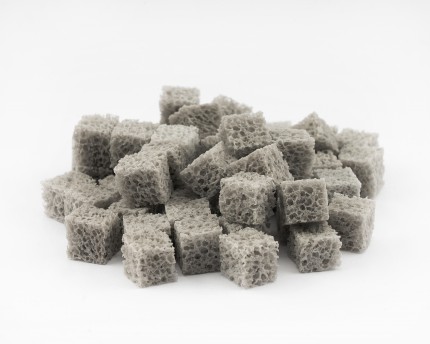- Item no: 5110
Fast delivery times
All products are in stock with us!14 years of breeding experience
Let our team of experts advise you!High customer satisfaction
from over 3,000 reviews "The diurnal Cambarellus schmitti, in German Schmitts Zwergflusskrebs, comes from Florida/USA. This small crayfish is still quite new in the hobby, it is not yet widespread in aquaristics. Cambarellus schmitti has a brownish marble pattern, but there are also striped animals. With a size of about 3 cm (measured without claws) it can be considered as a medium sized dwarf crayfish. In nature this nicely patterned small crayfish can be found mainly in clear streams and their spring ponds, often living there in dense stands of plants or in collections of leaves.
The sexes, as in all American and European crayfishes, can be reliably distinguished by the gonopores in the female (openings on the third pair of legs) and by the gonopods in the male (V-shaped mating styli projecting forward between the posterior pair of legs and formed by the first two pairs of webbed legs). Males have three pairs of webbed legs, whereas females have five.
Cambarellus schmitti becomes sexually mature at the age of about 3 months if well fed. If the animals feel well, the female carries about 15 - 25 eggs under the abdomen on her webbed feet after mating. From the egg to the small ready Cambarellus schmitti the development takes 3 - 6 weeks depending on the temperature. The small Schmittis stay under the pleon of the mother for a few days after hatching and then go on their own. They can be raised in a well structured tank with a nice layer of foliage with the parents.
Cambarellus schmitti is an extremely peaceful dwarf crayfish, and a small group of two females and one male can be kept excellently in a very diversely furnished aquarium with wood and stones, caves and other hiding places, starting at 30 liters. Floor space always takes precedence over height in an aquarium with crayfish , as the animals hardly swim and cannot do much with open water. For a group of five animals we recommend tanks from 54 l upwards. Cambarellus schmitti tolerates water temperatures from 14 to 26 °C and likes quite clean, oxygen-rich water. A pH-value between 6,5 and 8 is well suitable. The total hardness (GH) should not exceed 8, as should the carbonate hardness (KH). The aquarium can be planted well, since Schmitt's dwarf crayfish does not pinch off, eat or dig up plants. Since dwarf crayfish like to wander, the aquarium must close without gaps.
Socialization with smaller fish that live in the middle to upper water layers can work, Cambarellus schmitti is not known to be an aggressive hunter. Large fish will eat the dwarf crayfish and of course their offspring. Despite its peacefulness, Cambarellus schmitti should not be socialized with other crayfish species, the different way of communication leads to great stress and possibly fights. With dwarf shrimps (e.g. Neocaridina), which need comparable water values, Schmitt's dwarf crayfish can usually be kept together without problems. However, it is possible that careless or sick shrimps may be preyed upon. Cambarellus schmitti likes to eat live snails very much.
As Cambarellus schmitti is a North American crayfish, it can survive in the wild in our latitudes, at least in the warm months, and is also a potential carrier of crayfish plague. Therefore, it and the water in which it is kept must never be released into the wild (or into aquariums with crayfish from Europe, Asia and Australia). Crayfish plague is partly to blame for our native crayfish species being threatened with extinction.
Schmitt's dwarf crayfish are particularly fond of foliage from native deciduous trees such as beech or oak, but they will also readily accept commercial foods for crayfish and especially for dwarf crayfish, as well as flake foods and protein foods for shrimp and other shrimp granules and pellets. Nettles, dandelion and spinach, peas and pumpkin pieces as well as frozen food are also popular. You can't really go wrong with a varied diet and targeted protein feeding every two to three days.
Our food recommendation: Freshwater crayfish have a very varied diet in the wild. The Natureholic Crab Feed Sticks contain in a biologically balanced form only those ingredients that these crayfish in this or similar form to their natural food spectrum. This naturally supports and promotes moulting, growth and reproduction. Due to their protein content they are ideally suited for omnivorous crayfish of the genera Procambarus, Cambarus, Cambarellus, Astacus and the Cherax crayfish from Australia, which are basically omnivores that like to eat animal as well as vegetable food. The crayfish of the genus Cherax from Papua also like to eat a portion of animal food when they are young, but later they switch mainly to plant food.
Our plant recommendation: Use for planting NatureHolic InVitros. These are free of snails, planaria and other unwanted co-inhabitants. Also free of algae spores, bacteria and fungi.
Expert Tip: We recommend for fish keeping the NatureHolic 3 Phase Liquid. The care set offers the best all-round protection for your animals. It ensures optimal conditions for successful breeding and keeping.
| Scientific name: | Cambarellus schmitti Hobbs, 1942 |
| German name: | Schmitt's dwarf crayfish |
| Difficulty level: | suitable for beginners |
| Origin/Distribution: | Florida/USA |
| Coloration: | light brown to grayish, with dot pattern or stripe pattern |
| Age expectancy: | 1.5 to 2 years |
| Water parameters: | GH up to 8, KH up to 8, pH 6.5 to 8, temperature 8 to 26 °C |
| Tank size: | from 30 l for a pair or a small group of 2 females and 1 male, well structured |
| Food: | Natureholic crayfish food, brown autumn leaves, nettles and other green food, flake food, granulated food or food tabs, vegetables, frozen food |
| Reproduction: | easy, after three to six weeks 15 to 25 young crayfish hatch, they are cannibalistic and therefore need many hiding places |
| Behavior: | very peaceful, not strongly territorial |
| Socialization: | with shrimp and up to medium sized fish, also with snails (may be eaten) |
| Further information | Sex differences crayfish, shrimp, crayfish, snails & mussels feed properly, Cherax aquarium crayfish - keeping in the aquarium |
- Item no: 5110
- EAN No.: 7427061489286
Entdecke die Garnelio Welt!
Garnelio gehört zu den größten Onlineshops für wirbellose Aquarientiere weltweit.
Viele Artikel gibt es exklusiv nur bei uns im Shop.

